- Home
- Mack Maloney
Storm Over Saturn s-5
Storm Over Saturn s-5 Read online
Storm Over Saturn
( Starhawk - 5 )
Mack Maloney
7205 A.D. Hawk Hunter's most perilous mission ever is to find the one man who can stop the Solar Guards from seizing the source of all power in the Milky Way-and plunging the galaxy into a catastrophic Dark Age.
Mack Maloney
Storm Over Saturn
Part One
After the Flash
1
7205 A.D.
The KosmoVox was the second-fastest spaceship in the Galaxy.
It was a strange little craft belonging to the Earth Guard of the Fourth Galactic Empire. Like the Empire's mainline warships, they being the enormous two-mile-long Star-crashers, the KosmoVox was wedge-shaped, needle-nosed, and powered by a remarkable star engine known as a prop core. This allowed it to enter the seventh dimension and fly at a velocity known as Supertime. But while prop-core-equipped Starcrashers could travel at two light years a minute — traversing the Milky Way in one took less than a month — the KosmoVox could fly at nearly three light years a minute. This, even though the diminutive craft was only about one-hundredth the size of a monstrous Starcrasher.
No one knew who had built the KosmoVox or why it could go so fast. By twin sins of neglect and disinterest, much knowledge had been lost in the Fourth Empire over its seven centuries of expansion and dominance, including the secret of what made the prop cores work. The same held true for the KosmoVox. It was obviously a very old vessel, with bizarre nacelles and an overextended tail nearly belying its wedge shape. Yet it derived its power from the same source as the Empire's massive warships — the mysterious slab of black rock located in Earth's western desert known as the Big Generator — and could do just about everything they could do. It was just different, and no one had ever bothered to find out why.
An obscure war poem written in the early days of the empire speculated the KosmoVox had been built to transport spies around the Galaxy. As the official history of the realm only went back a couple hundred years, there was no way to verify this. But true or not, it was an appropriate backdrop for the KosmoVox's mission this night, as the lone person riding back in its passenger compartment was indeed an Imperial spy.
Nothing less than the fate of the Milky Way would soon be in his hands.
The Fourth Galactic Empire was on the verge of collapse. Its two main military arms, the Space Forces and the Solar Guards, had been fighting a brutal war against each other for the past three months. The hostilities had already taken more than one hundred million lives on both sides and destroyed thousands of Empire warships. While battles between the two services had been fought all over the Milky Way, the most significant combat had taken place inside the Two Arm, the second of the Galaxy's nine major arms, and just one over from the swirl that contained Earth itself. No less than seventeen major battles had taken place in the Two Arm, nightmarish clashes involving thousands of Starcrashers blasting away at each other with weapons of almost inconceivable power, this while vast armies of star troopers fought each other, hand-to-hand, across the airless battlefield of space.
Nowhere in the annals of human history had war been fought on such an immense scale.
Why the two services were fighting each other was both a simple and complex question.
The Solar Guards were essentially the military policemen of the Empire. Just 300 years old, their main responsibility was security within the Pluto Cloud, as the boundary of the Earth's Solar System was now called. However, through mostly nefarious means and a knack for holding political sway with the Emperor Himself, the SG had been able to spread its seamy influence throughout the Milky Way. This included eight of the Galaxy's nine major arms, its heavily populated center, and the area known as the Fringe, the outer ring of stars that served as the last frontier of the realm. To most eyes, the Solar Guards were thugs in uniforms, widely known for their heavy-handed tactics. Long on intimidation and indiscriminate use of force, they were roundly despised throughout the Galaxy.
On the other hand, the Space Forces were the Emperor's front-line military troops. With nearly thirty billion soldiers under arms, and millions of spacecraft in their employ, the SF was twice the size of the SG. Their specialty was invading and holding hostile planets. Space Forces troopers were well-trained, highly motivated, and very loyal to the Emperor. And as their roots went back to at least the beginning of the present Empire, its members considered themselves the real professionals of the Imperial armed forces. More often then not, they acted that way.
It was a difference in philosophy that lay at the heart of this internecine conflict. The Fourth Empire encompassed more than 100 billion star systems, 500 billion planets, and trillions of subjects. Three previous empires and several Dark Ages had passed since humans first left Mother Earth more than five thousand years before. During the First Empire just about every planet in the Milky Way, from the rocks to the gas giants, had been discovered, explored, terra-formed, and made part of the realm. But with three successive Imperial falls, billions of those planets became lost again, many not even realizing they were still part of a huge galactic empire. In fact, the inhabitants of some of these planets believed that life itself did not exist beyond their own atmospheres.
The current regime had reclaimed more than 85 percent of the Milky Way during its nearly seven centuries of absolute power. About a thousand additional planets were added every day — and this was where the clash in doctrine between the SF and the SG came in. Steeped in its jack-booted ways, the SG believed the best path to success was to reclaim these lost worlds as quickly as possible, no matter what the means. This included invading unsuspecting planets without prior warning, a hugely traumatic event for the inhabitants of the unlucky worlds. The Space Forces were dedicated to reclaiming every last planet for the Empire as well. But its leaders believed the best way to accomplish this was to go after the troublesome worlds first — those millions of Fringe planets inhabited by space pirates, criminals, tax dictators, and other interstellar lowlifes — and bring the more peaceful, law-abiding planets back in gradually.
So the dividing line between the two military branches was how humanely the Empire's expansion should be carried out; simple on the face of it, but complex when the myriad sociological, psychological, and especially political elements were added in. For the SG, it was all about galactic turf; for the SF, it was about respect, both on Mother Earth and throughout the cosmos. No one in the Imperial Court dared favor one service over the other, at least not in the light of day. And characteristically, the Emperor, the Supreme O'Nay, was mute on the subject. Thus, the fuse for this disastrous conflict had been smoldering for years.
Hostilities finally broke out when officers of the SG's elite Rapid Engagement Fleet discovered a Space Forces spy sent to the mid-Two Arm to investigate the mysterious activities of that special operations force. The SF man was captured on a barren and forbidding planet known as Doomsday 212 and summarily executed by the REF. When Space Forces ships rushed to the dying man's aid, they, too, were attacked by the REF. The SF returned fire, and just like that, three centuries of bitterness boiled over. The war was on.
Again, all this happened three months before. Now, after a major defeat during some very bizarre circumstances surrounding a second battle near Doomsday 212, the SG had ordered nearly all of its far flung fleet back to the One Arm, close to one million vessels. Most of these warships took up positions on the edge of the One Arm, along a line straddling the main star road leading to the original Solar
System and Earth itself. When this happened, the Space Forces recalled many of its ships, too. Soon nearly a million SF vessels were also in the area, many positioning themselves opposite the immense SG line, nose to nose with their
adversaries. An apocalyptic battle seemed both imminent and inevitable.
But strangely, the two gigantic redeployments resulted not in an immediate engagement but in a standoff, what in the old days would have been called aphony war. There were two reasons why. Surely, both sides were battered and tired, in need of regrouping after nearly one hundred days of intense battle. But more disturbing, both sides were suffering from serious, if intermittent, power shortages. In fact, the entire Empire was suffering from a case of cosmic brownout.
This was a result of an event that had become known as the Great Flash. At just about the same time as the mysterious second battle near Doomsday 212 was being fought at a place in space called Zero Point, the entire Galaxy experienced a brief but frightening power outage. The blackout lasted just a few seconds, preceded by a burst of light that was seen Galaxy-wide. But because all power in the Empire was derived from the Big Generator, the outage affected everybody and everything in the Milky Way, from the smallest atomic lightbulb to the prop core aboard the Empire's largest warship.
There was no mystery as to what caused the Great Flash. O'Nay's wife, the Empress of the Galaxy, broke into the desert stronghold where the Big Generator was located and, using a concealed weapon, fired a neuron beam directly into the heart of the big black slab. A piece of the holy rock broke off, and the blackout came a nanosecond later. The damage might have been more extensive had the
Empress's ray gun not derived its power from its target; the gun shut down right away. Still, the Big Generator blinked, and everything went dark.
(What happened to the Empress after the attack was not so clear. Some reports said she was killed by a squad of Imperial eunuchs guarding the Big Generator. Others said the Empress took her own life, possibly by dagger, possibly by poison. She was dead however, though this was not widely known throughout the Empire. The eunuch guards who witnessed the incident were widely rumored to have been killed, too, via state-mandated euthanasia.)
The weirdness didn't end when the Galaxy's lights came back on. However slight, the damage to the mysterious power source was apparently the cause of some very strange things that had happened throughout the Empire since the Great Flash. Aftershocks of a sort, or so it was believed. Blinks is what people had begun calling them.
A Starcrasher belonging to the Expeditionary and Exploratory Forces, the third of the Empire's three major military arms, was flying in toward Earth after a long voyage up the very wild Five Arm. It was about to literally crash a star — that is, fly right through it, hence the big ships' name — when its prop core inexplicably popped, pushing the vessel back in time a little bit. This was a very dangerous moment, as going through the heart of a star at Super-time speed took precise calculations and expert steering. Momentum alone carried this particular ship through the star's nuclear fires, but there was extensive and baffling damage to the monstrous vessel upon coming out the other side. Besides blowing out nearly every string circuit on board, the ship's aft quarter had transformed itself into what appeared to be the gigantic tail section of an ancient
World War Two airplane known as a B-24. What's more, all of the massive weaponry inside the stricken Starcrasher had turned into salt — yes, salt. And for the remainder of the voyage home, the crew found themselves being trailed by strange green ghosts. More blinks: on the Three Arm, an artificial moon suddenly disappeared, only to reappear way over in the Six Arm. On the Nine Arm, a group of schoolchildren suddenly gained the ability to fly — by sprouting wings, at least for a few minutes. On the Four Arm, the entire water supply of a tiny planetoid turned itself into the ancient liquor known as bourboni—and then at the first sip, changed back to water again.
Before leaving Earth on this mission, the Imperial spy in the back of the KosmoVox had witnessed a blink himself. He'd been sitting inside a very tony cafe atop Special Number One, the Imperial Family's grand floating city, when suddenly all the lights went out. When they came back on seconds later, they were burning a fiery red, and everyone in the place had become transparent, turning into living, human skeletons. Several terrifying moments went by, then the lights went out again. They were glowing bright yellow when they came back on this time, and all the patrons had become hideous caricatures of themselves, complete with scarred faces, overgrown fingernails, and fanglike teeth. The lights went out a third time, only to come back on in deep orange. Shadows cast by this strange effect made it seem as if the caf6 and everyone in it were engulfed in flames. So many patrons panicked, the air was absolutely sizzling with people transporting themselves out of the place. Seconds later, the spy found himself sitting alone in what had been a very crowded room, his body whole and presentable again. The experience startled him greatly. It was crazy and very strange, but he was even more amazed at how the Big Generator, which controlled absolutely everything in the Galaxy, could create such bizarre events simply by being on the fritz. The words that came to his mind were prophetic: God is playing games with us.
These tales, along with millions of others, were running rampant throughout the Galaxy, which, everyone knew, was actually a surprisingly small neighborhood, prone to gossip and superstition. Some of these events must have had rational explanations, but many did not. Certainly not the incident the spy had witnessed in the posh cafe. No matter, everyone was blaming anything even remotely weird these days on the aftereffects of the Great Flash. And the blinks seemed to be growing in number by the hour.
No military commander in his right mind would go to war under such conditions, not when every subatomic connector, quick-quark portal, and intradimensional diode within his two-mile-long starship was powered by the suddenly quirky Big Generator. This was the main reason the two major space armies now faced each other along a front that stretched more than 500,000 miles.
It was the conventional belief that the blinks would settle down eventually, though, and everything would return to normal.
Then the terrible war could resume.
It took the KosmoVox twice as long as usual to leave the Solar System.
The enigmatic little ship encountered a storm of invisible turbulence just outside the orbit of Mars, a mysterious disturbance not picked up by its battery of flight sensors.
Passing by Jupiter, its compartment was suddenly filled with static, from the depths of which ancient rock 'n roll music could briefly be heard. On approaching Saturn, a strange mirage: so many Solar Guards supply ships were orbiting the great planet, they appeared to make up yet another ring. By contrast, the heavily populated Neptune and its coterie of colorful moons seemed all but abandoned.
More blinks, the spy thought, staring out his porthole in back. God is still fooling with us…
Very real, however, was the traffic jam of spaceships clogging up the approaches to a Solar Guards border checkpoint known as Saint Michael's Pass.
Thousands of vessels were backed up, trying to get through the enormous, midspace frontier crossing, each one subjected to a long, thorough and, more often than not, very stressful SG scanning. The Solar Guards had declared martial law within the Pluto Cloud weeks before, and this was one result of that decree. No one got in or out of the original Solar System without the SG inspecting every sub-atom in said person's body and ship.
Only by his special Imperial pass was the spy able to get the KosmoVox to the head of this line. And while the Imperial agent was supposed to be above such things, the gruff SG border troops insisted on probing his ship and its passengers not once but twice. Finding nothing, they were harshly sent on their way.
Once in open space, the Kosmo's crew did a last check of their flight systems, then set their controls to the outer part of the One Arm, where the two fleets of SG and SF ships were facing each other. A long-range forward scan of the area confirmed what the spy already knew: that many planets in this part of space had been evacuated long ago. Few Imperial vessels other than those belonging to the SG were permitted to fly within this corridor, and indeed, tens of thousands of SG supply runners could
be seen shuttling between the trouble zone and the Pluto Cloud.
As for civilian vessels, none were allowed within a thousand light years of this very crowded piece of space.
They reached the edge of the One Arm less than an hour later.
Even from a great distance, the enormous double line of warships seemed to stretch to infinity. The spy had been in the service of the Empire for nearly two hundred years, still a young man by contemporary standards. (If you were lucky enough to have some of the life-prolonging Holy Blood in your veins, as did many in the very-extended Imperial Family, you could live nearly four times that long these days.) The spy had seen many strange things in those two centuries of undercover work. The aftermath of endless wars. Entire planets vaporized. The stars themselves turned upside down.
But he'd never seen anything like this.
On one side, that being the direction roughly pointing toward Earth, were hundreds of thousands of Space Forces warships, gleaming blue and white. On the other side, facing in the opposite direction, were the similarly numbered SG ships, sinister in their dark gray. They were separated by only a few miles in some places — not the hundreds the spy had envisioned for some reason. In fact, it was almost frightening just how narrow the separation between them was, especially when most of the warships facing each other were Starcrashers, two miles long themselves.
Early on, someone had dubbed this celestial front line the Star Trench. It was a good name.
And it was into the heart of it that the Imperial spy now had to go.
Because the KosmoVox belonged to the Earth Guard, neutrals in this fight, it was allowed, however grudgingly, to move through the SG lines and into the Star Trench. The pilots slowed their speedy craft to a crawl and flew the very narrow space separating the two gargantuan forces. The spy had his nose pressed up against the scout ship's bubble canopy now, his huge floppy spy hat curled back, his jaw dropped in astonishment as he eyed the warships on both sides of the Trench, side by side, almost entangled in one another.

 Strike Force Bravo s-2
Strike Force Bravo s-2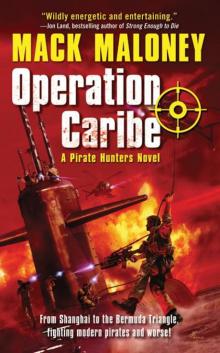 Operation Caribe ph-2
Operation Caribe ph-2 Beyond Area 51
Beyond Area 51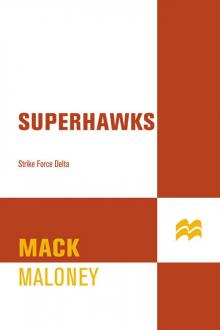 Strike Force Delta
Strike Force Delta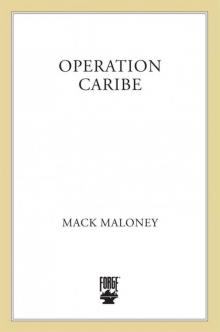 B00447820A EBOK
B00447820A EBOK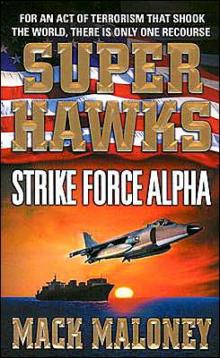 Strike Force Alpha
Strike Force Alpha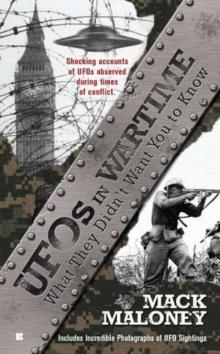 UFOs in Wartime: What They Didn't Want You To Know
UFOs in Wartime: What They Didn't Want You To Know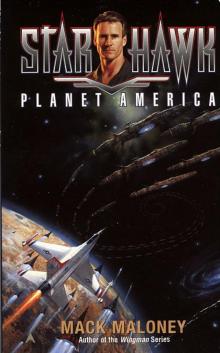 Planet America s-2
Planet America s-2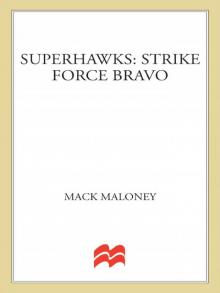 Strike Force Bravo
Strike Force Bravo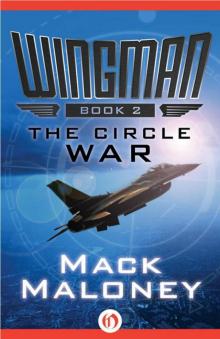 The Circle War w-2
The Circle War w-2 Operation Sea Ghost ph-3
Operation Sea Ghost ph-3 Strike Force Delta s-4
Strike Force Delta s-4 The Wingman Adventures Volume One
The Wingman Adventures Volume One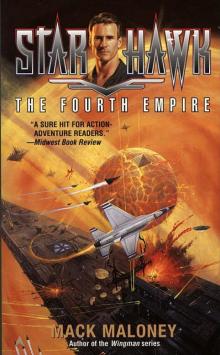 The Fourth Empire s-3
The Fourth Empire s-3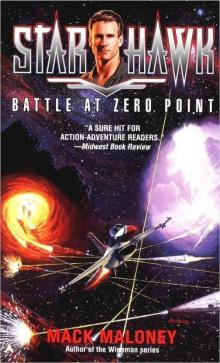 Battle at Zero Point s-4
Battle at Zero Point s-4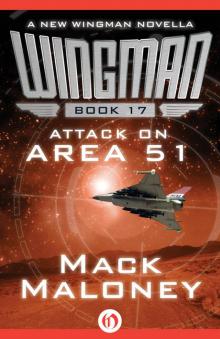 Attack on Area 51
Attack on Area 51 Chopper Ops
Chopper Ops B003IKHEWG EBOK
B003IKHEWG EBOK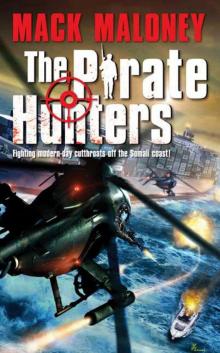 The Pirate Hunters ph-1
The Pirate Hunters ph-1 Chopper Ops co-1
Chopper Ops co-1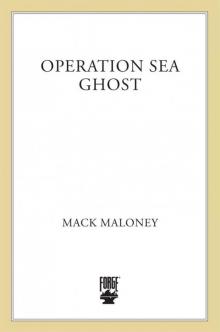 B005J4EW5G EBOK
B005J4EW5G EBOK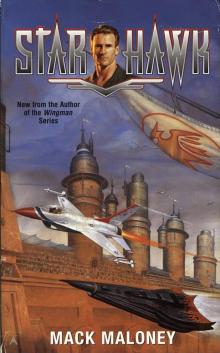 Starhawk s-1
Starhawk s-1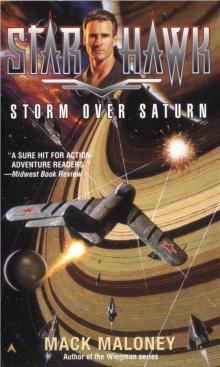 Storm Over Saturn s-5
Storm Over Saturn s-5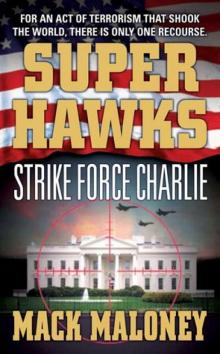 Strike Force Charlie s-3
Strike Force Charlie s-3